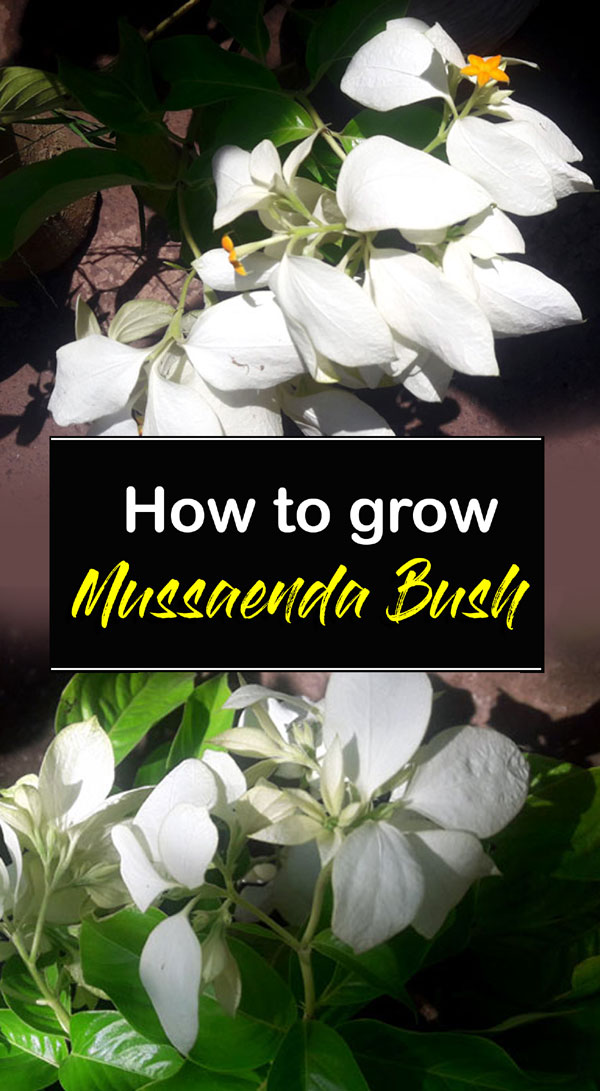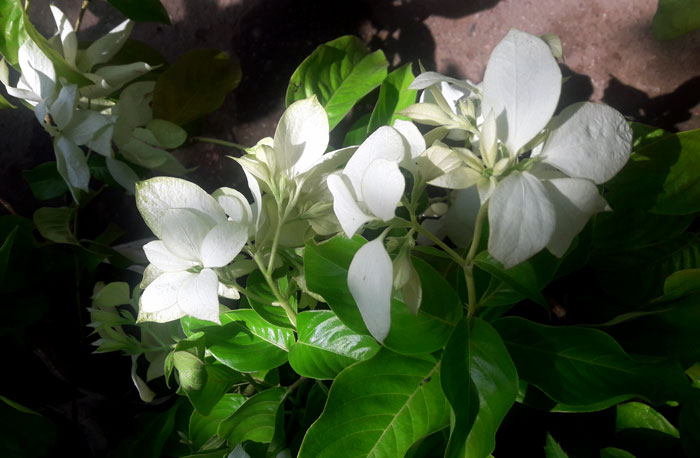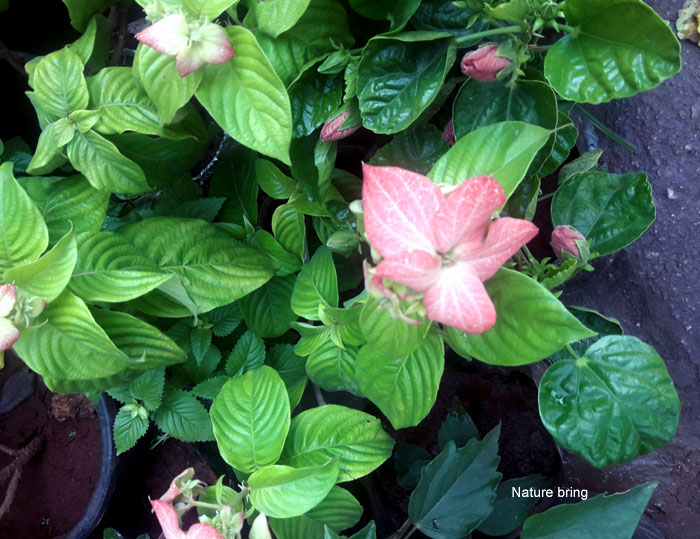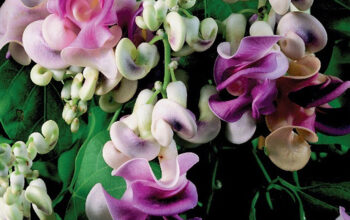Mussaenda Bush
Mussaenda bushes are an evergreen tropical and subtropical shrub, which are the attractions of your garden from spring to fall, these are from the Rubiaceae family. It is quite popular and comes in colors like yellow, red or creamy white with red, white or pink. Read Growing condition of Mussaenda bush, Varieties of Mussaenda bush, Mussaenda bush care and more about this plant.
This is a great houseplant and you can put it in the container also. Its ‘Queen Sirikit’ variety produces pale yellow to white flowers with red centers and pink brats. It has a shrub of about 2 to 15 feet and 5 other different hybrid species which are used for farming. Read more.
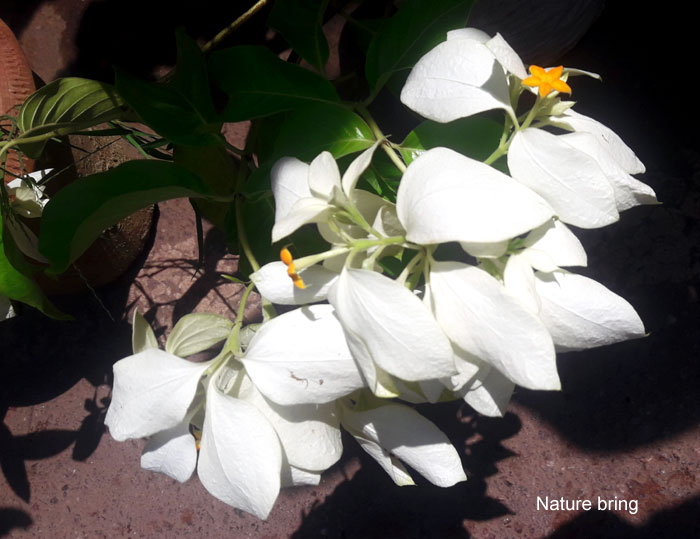
Mussaenda flowers
Although these evergreen tropical shrubs grow up to 10-15 in their areas, in the St. Louis areas it is 1-3 ‘tall in the containers. Large, its leaf-like showy spell 3 inches long clusters of small, tubular flowers increase floral seals in the season. Some individual flowers in each cluster will develop a large sepal, which provides real decorative performance. It’s oval and bright green leaves are approximately 6 “long.
Overview
Scientific name Mussaendaerythrophylla
Common name Mussaenda, Paper rose
Plant type Flower
Sun required Full Sun to part shade
Flower color Yellow, red, creamy white with red, white or pink
Blooming time Seasonal bloomer
Soil Well-drained organic-rich soil
Soil PH 6.0- 7.5
Zone 9-11
Common name
It is popular with many names like Mussaenda (Red, yellow, white, pink), Mussaenda, Red Flag Bush, Tropical Dogwood, Mussaenda Red Single, Bedina, HanuRei, Vellaiyilai, MithaiPhool, Encana (Dwarf Mussaenda), Mussaenda ‘Queen Sirikit’, Mussaenda ‘Capricorn Dream’ etc.
Growing condition of Mussaenda bush
Although it is easy to develop and care for these bushes, it is necessary to know its growing condition before planting.
Soil and location
It is grown in a completely fertile, dry and organic-rich, medium moisture soil. Winter hardy USDA zones 9-11 its grows well. They prefer full sun, so place it where there are less than 6 hours of sunshine. To get its shiny color, there is direct sunshine of morning and evening and shade in the hottest time. These bushes give you happiness in the hot months of the year and for a long time in the future.
Propagation
Mussaenda propagation can be done with soft or semi-hardwood cutting. Another way of propagating is air layering and for this, the spring and rainy season are most suitable. Seeds are rarely used.
Fertilizing
Plants prefer organic-rich and fertile soil which is heavily fed, these plants are regularly fertilized. Due to the lack of nutrients, the plant can be damaged. Nutrients are easily separated from the soil in high rainfall areas. Using organic fertilizers is more beneficial. Benefit from regular organic, leafy fertilizer applications. Apply liquid fertilizer early in the morning or in the evening.
Watering
Make sure to keep the bush water once or twice per week, it keeps moisture in the soil which is necessary for the plant, but do not let the mud. Water the plants during dry periods, the plants suffer from dryness and can be absorbed and die.
Pruning
Mussaenda bush is a stroller and benefits from annual pruning are beneficial. Generally, it should not be removed more than 1/3 of the development. If more renewal is required, then it is better to have long-term sorting, gradually reducing its size as required. Some species and varieties become climbers, they can also be trained with fences. Removal of dead flowers and bracts is also advantageous in the flowering season.
Uses Musseanda flower
Musseandas bushes are usually planted behind the boundaries of the garden; they are tall shrubs, due to which their feet are often bare, to cover it, you can plant a ground cover plant or lower bush. For this, you select those plants that the selection of those plants is not firm and can compete with them. Read more.
Varieties of Mussaenda bush
This highly decorative Mussaenda flower plant in tropical areas contains more than 200 known subspecies, but only 8 to 10 varieties are more popular. In the last few years, much work has been done in India to make more color and hardening of the plant. ‘Rosa’ or ‘Queen Sirikit’ and White ‘Donna Aurorae’ are the most popular in India. Brilliant ‘Red flag bush’ is also a great hybrid, the orange flower species is called ‘Maemelada’ or ‘Calcutta sunset’. The variants in which there is a single bracts flower, the more surprising.
Mussaenda care
- Mussaenda requires very hot temperatures to spread, and hence its propagation usually ranges from mid-January to autumn.
- Keeping your plant from sun to partial shadow, keeping in mind a little bit of security with strong winds.
- Hot months they grow very rapidly, and its branches remain slightly soft and there may be the possibility of loss in exposed sites.
- Spread the 2 inches deep bark mulch around the bush. Keep it 3 inches away from the bush stem.
- Water the bush once or twice per week, thereby keeping moisture.
- These bushes are not particularly fussy about soil or condition, but in the spring when the leaves begin to grow, it should eat well, at this time it also requires good marching.
- Cut them back late in the winter is quite difficult. Pruning promotes the development of the plant, which helps in better Mussaenda flower production.
Pests problems of Mussaenda plant
These plants do not have any serious pest or disease problem. Especially if their nutrition and climate requirements are met. These can usually be subject to mili bugs, and in turn, it can cause the sooty mold growing on the honey. Hot, dry conditions encourage these insects. Spider kites and whiteflies can also be seen on indoor plants.
Read also: Growing Pencil cactus in containers. Verbena Growing and caring guide. Long beans growing and care tips. Growing and care about Rose cactus. How to grow Bougainvillea in containers. Amaryllis growing and caring tips. Elephant apple growing and care guide. Anthurium plant Growing indoors. Plumeria growing and caring guide. Coriander growing guide. Kiwi fruit Growing in containers. Mulberry tree growing at home. Loofah gourd growing and caring at home.
Happy gardening.
For Pin:
